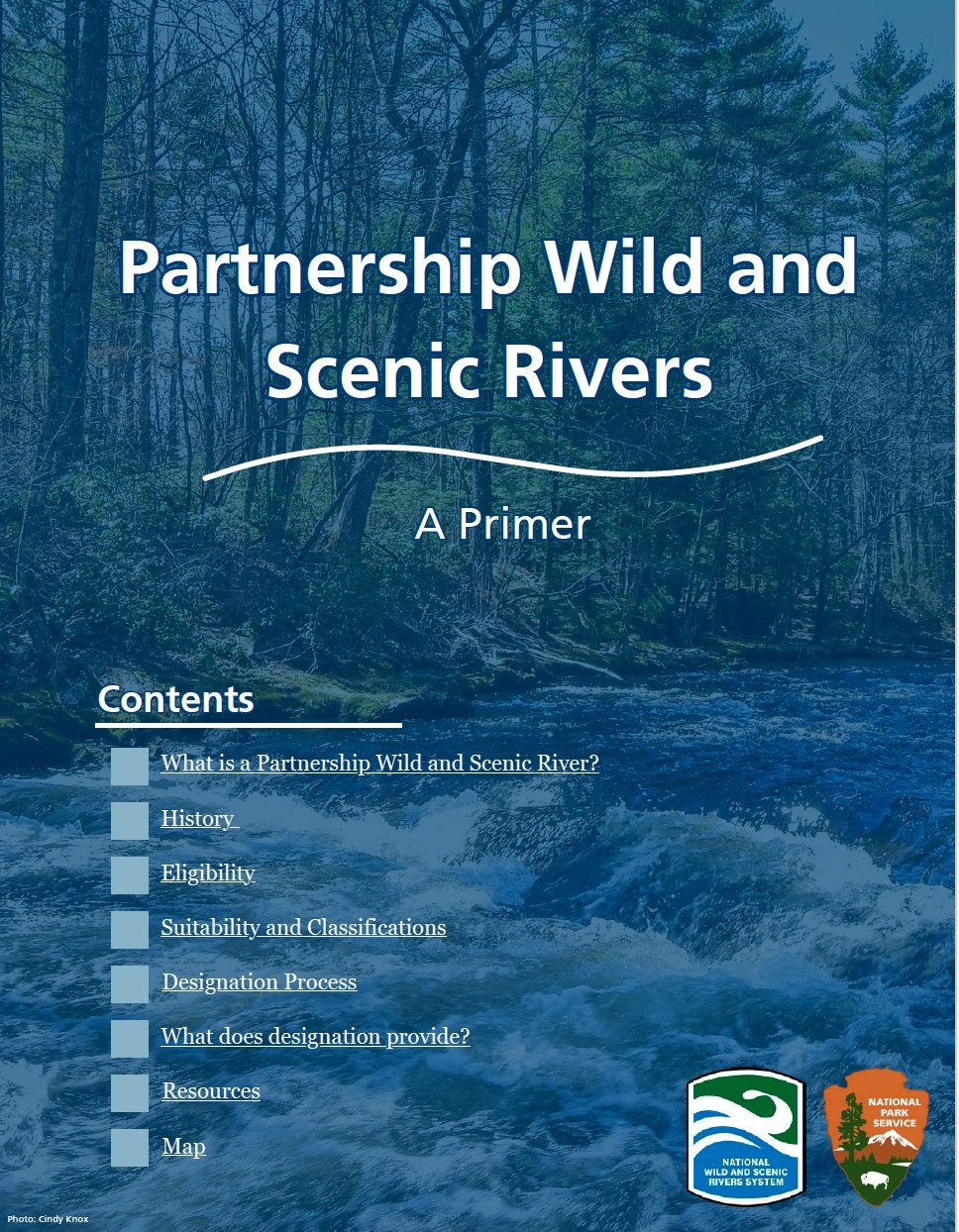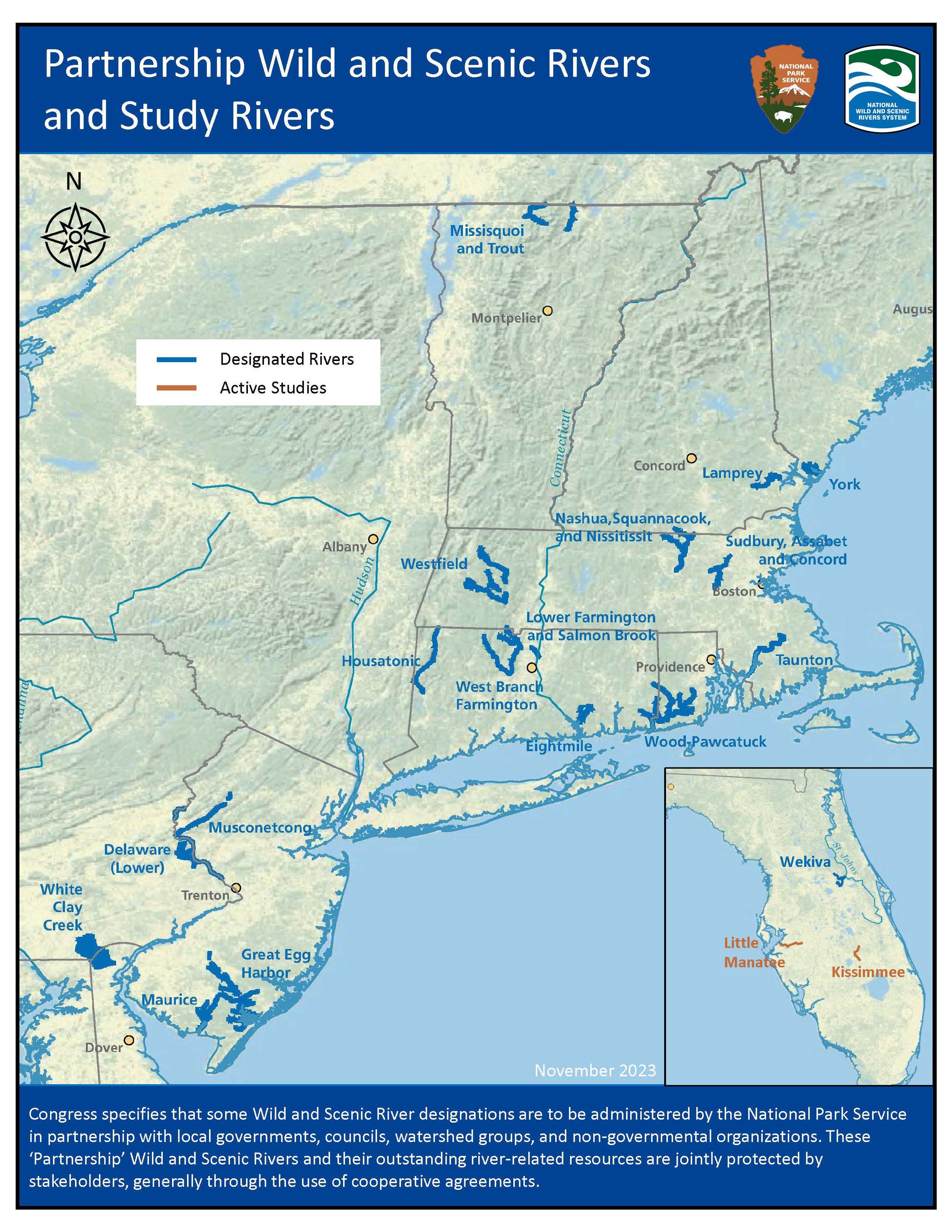The National Wild and Scenic Rivers System, administered by several federal agencies including the National Park Service, was created by an act of Congress in 1968. The Wild and Scenic Rivers Act calls on the nation to select rivers with outstanding scenic, recreational, natural, historic, cultural, or similar values and preserve them in a free-flowing condition. Click here to view the Wild & Scenic Rivers Act of 1968. Recognizing the need to protect rivers beyond federally owned lands, the Partnership Wild and Scenic River Program was initiated within the National Wild and Scenic Rivers System. In October 2000, Congress designated White Clay Creek as a Partnership Wild and Scenic River.
The White Clay is the first National Wild and Scenic River protected in its entirety. This marked the first time an entire watershed - rather than just a section of river - had been designated into the system. This "beyond-the-riverbank" approach takes into consideration the variety of influences outside the river corridor that affect river habitat and water quality. As residents of (and visitors to) the White Clay Creek watershed, we are free to enjoy its unique benefits but we also share responsibility for maintaining the characteristics that make the watershed so special.
A 2009 proposal to expand the designation and improve protection in the White Clay watershed was led by former Senator Ted Kaufman (D-Del.) in the Senate and Representative Pitts (R-PA) in the House. It passed twice in the Senate: once in 2011 and again in 2013. Finally, in late 2014 after six long years of hard work, both the House and the Senate successfully passed the Coons-Pitts bill, which was signed into law by President Obama. The White Clay Expansion Act adds approximately nine miles of river segments to the already existing 190 miles protected under the Wild and Scenic Rivers designation, with no associated federal cost.
The bill expands the original designation to incorporate approximately 9 miles of two small stream sections that were omitted from the original Wild and Scenic Rivers designation. The newly added segments in the bill include a 1.6-mile stretch of Lamborn Run in Delaware, stretching almost from the headwaters of the mainstream of White Clay Creek, that was originally omitted due to its consideration as an option for a dam to supply drinking water for northern Delaware. The bill also encompasses a 7.4-mile stretch of stream in Pennsylvania’s New Garden Township (Egypt Run, and a missing section of the East Branch) that was similarly previously omitted due to its consideration for a dam. That consideration has since been withdrawn and the Township is now supportive of the designation. The aggregated 9 miles bring the total number of designated stream miles to 199.
Map of Additional Protected Segments to White Clay Creek
Ten years of the program’s accomplishments accompanied by changes in anticipated usage of the creek led to requests for inclusion of these areas. Expanding stream designation within White Clay will extend and help safeguard historical, recreational, and natural resources in addition to protecting the river as a source of drinking water for future generations.
The legislation that designated the White Clay Creek and its tributaries in Delaware and Pennsylvania into the National Wild and Scenic Rivers System was introduced in 2000 Congress by Congressmen Michael Castle (DE) and Joseph Pitts (PA); and by Senators Joseph Biden (DE), William Roth (DE), Rick Santorum (PA), and Arlen Specter (PA). This legislation, P.L. 106-357, was passed by both houses of Congress and signed into law by President William Clinton on October 24, 2000.
The White Clay Wild & Scenic Expansion Act was reintroduced in 2014 and sponsored by Delaware Senator Chris Coons, co-sponsored by Delaware Senator Tom Carper, and Pennsylvania Representative Joseph Pitts, and co-sponsored by Delaware Representative John Carney and Pennsylvania Senator Robert Casey.


